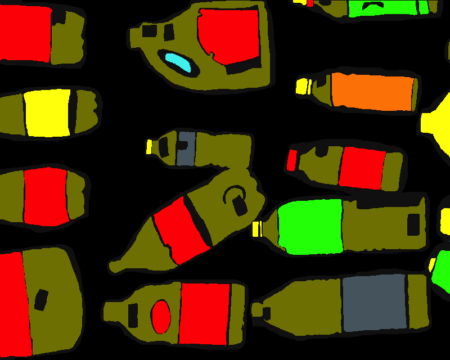Benefits of Hyperspectral Data Analysis for Plastic Recycling
on Mon Nov 07 2022
Francis Doumet

As the recycling industry looks for ways to become more efficient and effective, many operators are turning to hyperspectral data analysis as a solution. Hyperspectral data analysis is a form of spectroscopy that can identify the chemical properties of objects. This information can then be used to sort and recycle materials more effectively.
In the case of plastic recycling, hyperspectral data analysis can be used to identify the type of plastic an object is made from. This is important because different types of plastic require different recycling processes. By using hyperspectral data analysis, operators can quickly and accurately sort plastics for recycling, which leads to a more efficient recycling process overall.
How Hyperspectral Data Analysis Works
Hyperspectral data analysis works by shining a light on an object and analyzing the light that is reflected back. The reflected light contains information about the chemical composition of the object, which can then be used to identify the material.
In the past, scientifically identifying the material of an object was a time-consuming process that often required manual inspection. Other methods commonly used in production today empirically determine the material type by its shape, leading to up to 30% error/contamination rates. Hyperspectral data analysis, on the other hand, can automate the scientific process of identifying materials, making it much faster and more accurate. This is especially beneficial in the case of plastic recycling, where there are many different types of plastics that need to be sorted.
Benefits of Hyperspectral Data Analysis for Plastic Recycling
There are many benefits that hyperspectral data analysis can bring to the plastic recycling industry. These benefits include:
- Increased accuracy in material identification: One of the biggest benefits of hyperspectral data analysis is that it can provide much more accurate information about the composition of materials than traditional methods. This includes identifying different types of transparent objects, black material, or even mixed or multilayered material. This is extremely important in recycling applications, where getting the wrong material in the wrong recycle stream can lead to significant problems downstream.
- Improved process control: Another benefit of using hyperspectral data analysis in plastic recycling plants is that it can help improve process control. By having more accurate information about the composition of materials, operators can make better decisions about processing parameters and avoid potential issues.
- Greater efficiency: Finally, hyperspectral data analysis can also help make plastic recycling plants more efficient. By providing more accurate information about materials, operators can eliminate guesswork and trial-and-error from their process, which can lead to significant time and cost savings.
- Enhanced Safety: manually sorting through plastics can expose workers to hazardous materials such as chemicals and sharp objects. By using hyperspectral data analysis, workers can be kept away from these hazards, leading to a safer work environment overall.
Conclusion
There are many potential benefits to using hyperspectral data analysis in plastic recycling plants. If you are considering implementing this technology into your operation, be sure to reach out here to get started.
